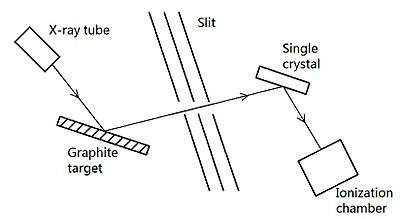A new method for the generation of intense X-ray and gamma-ray radiation

International group of researchers including scientists from Skoltech have invented a new method for the generation of intense X-ray and gamma-ray radiation based on nonlinear Compton scattering. Their results were published in Physical Review Letters.
The Compton effect is similar to playing tennis; an electron plays the role of the racket and a photon plays the role of the ball. A photon being reflected from the fast electron racket acquires additional energy. It cannot fly even faster—the speed limit forbids that. But it can easily change its wavelength. Using this simple game, researchers can transform the wavelength of the incoming photon from the visible range to X-rays and gamma-rays. Hard photon sources based on inverse (linear) Compton scattering are widely used, and typically consist of an electron accelerator and a laser system. The main advantage of such sources is the possibility of generating a narrow bandwidth radiation. In such a system, the wavelength is easily tunable by changing the energy of the electrons.
The most straightforward way to increase the number of generated X-ray and gamma-ray photons is to increase the intensity of the laser system. In other words, the more tightly packed the laser radiation in space (considering that the diffraction is small), the more scattering events between laser photons and electrons there will be.
Increasing the power of the laser radiation in Compton scattering leads to considerable spectral broadening. This is due to the light pressure, which slows the electrons down. In other words, the tennis racket, while deflecting many small tennis balls at once, is slowed down; hence, the deflected balls will receive less energy. The problem is that powerful laser radiation is not continuous, but rather comes as pulses in time. The intensity of powerful laser pulses first slowly grows and then slowly dies out. Consequently, the light pressure is non-uniform and the slowdown of the electrons is different at different moments of time, leading to different energy of reflected photons.

The scientific team, including Skoltech Professor Sergey Rykovanov, invented a new method for generation of intense monoenergetic X-ray and gamma-ray radiation based on nonlinear Compton scattering.
Sergey Rykovanov, a professor from Skoltech's Center for Computational and Data-Intensive Science and Engineering, says, "Such spectral line broadening is parasitic, since we want to obtain a narrow bandwidth photon source with a well defined wavelength. We invented a very simple method to remove the parasitic Compton line broadening for intense laser pulses and significantly increase the number of generated X and gamma-ray photons. To do this, one has to carefully tune the frequency of the laser pulse (in other words, to chirp it) so that it corresponds to the laser pulse intensity at each moment of time. For optimal effect, we proposed to use two linearly and oppositely chirped laser pulses propagating with a certain delay to each other. In my opinion, the beauty of our work is in its simplicity. To be entirely honest, we were very surprised how simply and smoothly everything worked out."
The new invention can significantly increase the brightness of modern and future synchrotron sources for research in medicine, nuclear physics and material science.
More information: Daniel Seipt et al, Optimizing Laser Pulses for Narrow-Band Inverse Compton Sources in the High-Intensity Regime, Physical Review Letters (2019). DOI: 10.1103/PhysRevLett.122.204802
Journal information: Physical Review Letters
Provided by Skolkovo Institute of Science and Technology


















